Imagine struggling with deep emotional pain, trauma, or addiction and feeling like conventional treatments haven’t given you the breakthrough you need. In search of healing, you come across Ayahuasca – an ancient psychedelic brew famed for its transformative spiritual journeys. The pain point for many is clear: you want relief, insight, and healing when nothing else has worked. Ayahuasca promises a profound experience that addresses the root causes of suffering, from depression and anxiety to lifelong trauma.
But with that promise come questions about its safety, legality, and whether it’s the right path for you. Its effects are intense, unpredictable, and not without risk. Some describe the experience as life-changing and beautiful. Others face frightening hallucinations and severe side effects. Hence, any use of this drug needs proper monitoring.
This is where Samarpan Recovery can come to your rescue. At Samarpan, we understand the challenges you face in your healing journey. We’re a de-addiction center committed to a client-first approach.
In this blog, we’ll not only demystify Ayahuasca, its use, benefits, and side effects, but also guide you on safe practices. We’ll address both informational questions and transactional queries. By the end, you’ll have a clear, friendly, and confidence-inspiring understanding of Ayahuasca. And if you decide this path is something you want to explore, Samarpan’s team is here to help with professional guidance and compassionate support.
Let’s dive in and explore Ayahuasca therapy, its traditional use in ceremonies, the potential benefits people seek from it, and the risks you must consider.
What is Ayahuasca? Meaning and Origins
Ayahuasca is a psychoactive herbal brew originating from the Amazon rainforest. Indigenous tribes in countries like Peru, Brazil, Colombia, and Ecuador have brewed and consumed Ayahuasca for centuries as part of traditional medicine and shamanic spiritual practices word “Ayahuasca” comes from the Quechua language, meaning “spirit rope” or “vine of the soul,” reflecting the belief that it opens a connection to the spiritual world.
Ayahuasca isn’t a single plant but a combination of plant ingredients. It is a powerful, mind-altering brew made from two main Amazonian plants: the Banisteriopsis caapi vine and the Psychotria viridis leaf. The vine contains natural chemicals (MAO inhibitors) that make the leaf’s DMT, a strong psychedelic compound, active in the body for several hours. In essence, Ayahuasca is also called a psychedelic drug brew– a potion that induces altered states of consciousness, hallucinations, and intense introspective experiences.
What’s important is that the Ayahuasca plant is deeply rooted in the Amazonian indigenous cosmovision, seen not just as a medicine, but as a teacher or guide. In fact, many Amazonian cultures affectionately call Ayahuasca “Mother Ayahuasca” or a plant teacher, emphasizing the nurturing yet challenging lessons it can impart.
The Ayahuasca plant also became central to certain spiritual movements which blend Christian beliefs with Ayahuasca ceremonies. Today, Ayahuasca is known worldwide, both praised as a powerful tool for healing and insight and approached with caution due to its intense effects and legal status.
Today, ayahuasca has caught the world’s attention as more people look for alternative ways to heal trauma, break addictions, or simply understand themselves on a deeper level. From jungles in Peru to small ayahuasca retreats in India, seekers are hoping for breakthroughs they can’t find in conventional therapy.
Ayahuasca Ceremonies and How It’s Used
Primarily, Ayahuasca is taken in the context of a ceremony or retreat under the guidance of experienced facilitators. Unlike many other psychedelics, Ayahuasca isn’t a casual party drug – its intense effects and purgative nature make it something usually approached with preparation, setting, and intention.
The Ayahuasca Ceremony
An Ayahuasca ceremony is a guided session in which participants drink the brew and embark on an inner journey typically lasting 4 to 6 hours. Ceremonies usually take place at night, in a dimly lit or candlelit space, with participants sitting or lying down on mats. A trained shaman or facilitator leads the ritual, often singing traditional songs called “icaros” that are believed to help guide the visions and healing process. There may be the use of rattles, drums, or floral water to create a sacred atmosphere. Before drinking, participants often set an intention (for example, seeking insight into a personal issue or healing from past trauma).
During the ceremony, Ayahuasca’s effects gradually intensify. Within 20-60 minutes of drinking, most people start to feel altered sensations. Commonly, individuals experience visual and auditory hallucinations, vivid imagery, and deep emotional waves. Many describe encountering what feels like a “spirit” or the medicine “talking” to them, guiding them through personal memories and challenges. It’s often described as a journey or vision quest within one’s mind.
One hallmark of the Ayahuasca experience is “the purge”. Ayahuasca often induces nausea, vomiting, and sometimes diarrhea in the short term.While this sounds unpleasant, in traditional understanding this purge is not seen as a side effect but as part of the healing – a physical and spiritual cleansing. Participants may vomit into provided buckets, which is accepted as normal during ceremonies. From a medical perspective, this happens because Ayahuasca increases serotonin in the gut, triggering the vagus nerve and stomach upset.
Safety and supervision are crucial, as Ayahuasca can make people disoriented or emotionally raw. Having a skilled guide helps ensure that if someone has a difficult moment, they are comforted and kept safe. By the ceremony’s end, many participants report a sense of catharsis, profound insight, or spiritual connection.
Modern Ayahuasca Retreats
In recent years, multi-day Ayahuasca retreats have become popular, attracting people from around the world. These retreats typically last anywhere from a weekend to a week or more, during which participants may under; multiple Ayahuasca ceremonies and receive support in between. Many also incorporate practices like yoga, meditation, or nature walks to complement the inner work.
It’s important to note that Ayahuasca retreats operate in a legal grey area in many places. In countries like Peru, Brazil, and Costa Rica, Ayahuasca use is largely legal, and there are established retreat centers with experienced Amazonian shamans. In contrast, Ayahuasca in India is illegal due to its DMT content. This means any so-called “Ayahuasca retreat” in India would be underground and risky, and many Indians or spiritual seekers instead travel abroad to experience Ayahuasca.
If you’re considering an Ayahuasca retreat, preparation and research are key. Traditional shamans advise following a special diet before and after Ayahuasca: avoiding spicy foods, pork, alcohol, caffeine, and sexual activity for days to weeks. The idea is to purify the body and mind, and to avoid foods that might react poorly with MAOIs. Psychologically, going in with clear intentions and an open mind is important, but also realistic expectations. Ayahuasca is not a magic cure; it’s the beginning of an inner work process that can unfold over time.
After the ceremony, integration is crucial. People often come out of Ayahuasca sessions with powerful realizations or emotions at the surface. Working with a therapist or counselor who understands psychedelic experiences can greatly help in translating those insights into actual life changes.
Are There Any Benefits of Ayahuasca
Why do people go through Ayahuasca’s challenging journey of purging and intense visions? The answer lies in its potential benefits, which are reported both anecdotally by users and increasingly studied by scientists. It’s important to approach this with a balanced view:
Here are some of the key benefits and uses associated with Ayahuasca plant:
Deep Emotional and Psychological Healing
Many participants report that Ayahuasca helped them confront and heal unresolved issues such as past trauma, grief, or emotional pain. During an Ayahuasca session, repressed memories or emotions may surface, allowing a person to work through them. In fact, a large number of people describe therapeutic breakthroughs, gaining insight into the roots of their depression, anxiety, or personal traumas.
Antidepressant and Anxiolytic (Anti-Anxiety) Effects
Scientific studies and systematic reviews have found that Ayahuasca can have notable antidepressant and anti-anxiety effects. For instance, in clinical settings or research trials, people with treatment-resistant depression have shown improvements after controlled Ayahuasca sessions. These mood benefits are thought to come from Ayahuasca’s pharmacological impact on the brain’s serotonin receptors and from the intense introspective experience that can alter one’s perspective on life.
Spiritual Insights and Personal Growth
Beyond clinical metrics, many seek Ayahuasca for spiritual growth. Users commonly feel a sense of connecting to something larger than themselves, whether that’s nature, the universe, or a higher power. They may gain a new understanding of their purpose in life or the nature of consciousness. Even for those who don’t frame it in religious terms, the experience can shift how one sees the world and oneself. This can result in positive changes like breaking negative thought patterns.
Addiction Interruption
An intriguing benefit reported is Ayahuasca’s potential in helping people overcome addictions. Some addiction recovery retreats incorporate Ayahuasca ceremonies as part of treatment. It’s believed that Ayahuasca’s intense self-reflection can help individuals confront the underlying causes of addiction and break unhealthy habits. Ayahuasca isn’t a stand-alone cure for addiction, but it has shown promise as a complementary tool for some in recovery, helping to “reframe” their relationship with substances or alcohol.
Also read: Dopamine and Addiction: What’s the Connection?
Scientific Perspective
On a neurological level, Ayahuasca’s active components affect the brain in ways that can explain some benefits. DMT acts on the 5-HT2A serotonin receptors, which is associated with the psychedelic, mind-opening effects. Meanwhile, the harmala alkaloids not only make DMT orally active but also have their own effects, possibly promoting neurogenesis and altering brain network dynamics.
Side Effects and Risks of Ayahuasca
If Ayahuasca offers so many potential rewards, what’s the catch? As with any powerful intervention, especially a psychedelic drug, Ayahuasca carries significant side effects and risks that must be understood. Ensuring a safe experience means being aware of these risks and taking precautions. Here’s what you need to know about Ayahuasca’s side effects:
1. Immediate Physical Side Effects (The “Purge” and More):
The most notorious side effects are nausea, vomiting, and diarrhea, often experienced during the ceremony itself.. About 70% of people in a large global survey of Ayahuasca users reported significant nausea/vomiting while on Ayahuasca. This purge can be uncomfortable and messy, but it’s expected. Along with gastrointestinal distress, Ayahuasca frequently causes a range of other temporary physical effects like increased blood pressure and heart rate, headache or dizziness, muscle aches, coordination issues and dehydration.
2. Psychological Side Effects and Dangers:
Ayahuasca powerfully affects the mind, and not always in a gentle way. Even though many users ultimately consider their experience positive, roughly 50-60% report some kind of negative mental health effect in the days or weeks following a ceremony. These psychological side effects can include intense anxiety or fear, paranoia or confusion, feeling overwhelmed or sad later. It’s very important to highlight that Ayahuasca can potentially trigger mental health crises in susceptible individuals.
Since Ayahuasca boosts serotonin, if someone is on antidepressant medications (SSRIs) or certain other drugs, combining them with Ayahuasca can cause a harmful surplus of serotonin in the body, leading to high fever, agitation, seizures, or worse.
3. Lack of Regulation and Variable Purity
Outside of traditional indigenous contexts, Ayahuasca brews can vary wildly in strength and composition. Since it’s not a regulated substance, you might not know exactly how potent a batch is or if additional psychoactive plants are mixed in. Unscrupulous operators might even spike brews with other drugs. This uncertainty adds to the risk – you are largely trusting the provider.
4. Legal and Ethical Risks
Taking Ayahuasca in a country where it’s illegal can carry legal consequences. Even in countries where it’s legal, there’s the ethical consideration of who is guiding your experience. Unfortunately, there are charlatans – so-called shamans who prey on tourists. Some have been accused of abuse or misconduct during vulnerable moments of a ceremony. Always ensure you’re with a trustworthy, well-reviewed facilitator. Women especially should take care to be in safe ceremony environments, as there have been rare reports of sexual misconduct by fake shamans.
5. Not a One-and-Done Miracle
Ayahuasca might show you powerful truths, but the integration can be challenging. Some people feel so amazed by the experience that they become a bit dependent on it, wanting to do multiple ceremonies without actually making changes in daily life. There’s a phenomenon of “Aya tourism” where folks chase ceremony after ceremony. Psychedelic experts often caution that the real work begins after the ceremony. If one doesn’t integrate, the benefits can fade and one might be left with confusion or spiritual disorientation.
Ayahuasca in India: Retreats and Legal Status
If you’re in India and interested in Ayahuasca, one of your big questions is likely: Is it available or legal here? The short answer is No – Ayahuasca is essentially illegal in India. This is because DMT, the primary psychoactive compound in Ayahuasca, is classified as a controlled substance under India’s NDPS Act of 1985. Possessing, making, or consuming DMT can lead to harsh legal penalties, including imprisonment. While the Ayahuasca vine itself isn’t explicitly listed as illegal, the minute you prepare it with a DMT-containing plant), you’ve effectively produced DMT in a consumable form, which is banned.
Are there Ayahuasca retreats in India? Officially, no reputable, open retreat can operate because of the legality issue. If you search online, you might find whispers of underground ceremonies or invites-only gatherings happening covertly. However, these come with major risks:
- Legal risk: As mentioned, attending could get you in trouble with the law if discovered.
- Safety risk: An underground session won’t have any oversight or guarantee of a trained shaman. You might not know what you’re drinking or who is running the show.
- Lack of recourse: If something ;es wrong (health-wise or any misconduct), you can’t exactly go to authorities when what you were doing was illegal.
For these reasons, many Indians or India-based wellness seekers choose to attend Ayahuasca retreats outside India, in places where it’s legal or decriminalized. Some popular destinations for Ayahuasca tourism include:
- Peru: Perhaps the most famous spot – cities like Iquitos or retreats in the Sacred Valley near Cusco have numerous Ayahuasca centers. It’s legal and part of cultural heritage there. You’ll find authentic Amazonian shamans and a range of options from rustic to luxurious.
- Brazil: Ayahuasca is legal for religious use. Churches like Santo Daime offer ceremonies, and there are retreat programs as well.
- Costa Rica: Home to some well-known retreat centers which operate legally and cater to international visitors, often blending shamanic and therapeutic approaches.
- Spain or Portugal: Surprising to some, but there are legal loopholes allowing private ceremonies in countries like Spain, and some well-reviewed retreats have popped up there.
- Other South/Central American countries: Ecuador, Colombia, and Mexico (in some indigenous jurisdictions or private settings) also have retreats.
Conclusion
Ayahuasca is often described with paradoxes: it’s intensely challenging yet potentially healing, ancient yet relevant in modern times, illegal in many places yet sought by people worldwide. We’ve explored its use, benefits, and side effects in depth. By now, we understand that Ayahuasca is not a recreational joyride but a serious journey that can lead to profound personal insights – if approached responsibly.
For those grappling with mental or emotional pain, Ayahuasca presents both hope and caution. The hope is that it might provide the breakthrough or perspective shift you’ve been longing for – indeed, research shows notable antidepressant and psychological benefits in controlled settings.
Samarpan’s perspective is one of balanced, student-first guidance. We are passionate about innovative treatments and honoring traditional wisdom, but safety and the client’s wellbeing remain paramount. If you’re considering Ayahuasca or any psychedelic journey.
Remember that transformation can take many forms. Ayahuasca is one path among many. Some people find similar breakthroughs in meditation retreats, breathwork, or intensive therapy sessions, without the pharmacological risks. Others truly feel that Ayahuasca was the key that finally opened a locked door in their soul. Each journey is personal.
If you decide that an Ayahuasca retreat is in your future, we at Samarpan encourage you to do it the right way: legal, safe, and with proper preparation/integration. And if you’d rather pursue healing through more conventional or locally available means, know that there is a wealth of therapies and programs that can help, from trauma therapy modalities to medically supervised treatments. You are not alone in this process.
Frequently Asked Questions
1. What happens in an ayahuasca retreat?
In an ayahuasca retreat, participants drink the brew in a guided ceremony to explore deep emotions and spiritual healing. Traditional chanting and rituals help create a safe, sacred space.
2. What is the ayahuasca plant used for?
The ayahuasca plant is used in ceremonies to help people gain insight, process trauma, or break addiction patterns. Many seek it for spiritual growth and self-discovery.
3. Is the ayahuasca plant legal?
Because it contains DMT, the ayahuasca plant is illegal in many countries, including India. Always check local laws before joining an ayahuasca retreat.
4. How does ayahuasca affect the brain?
Ayahuasca affects the brain by increasing serotonin and altering consciousness with DMT’s psychedelic effects. This can lead to intense visions and emotional release.
5. What are psychedelic drugs used to treat?
Some psychedelic drugs, like ayahuasca, are being studied for treating depression, PTSD, and addiction. However, research is still new and not all uses are proven safe.
6. What does ayahuasca do to you?
Ayahuasca can cause vivid hallucinations, deep emotional shifts, and purging. Many seek ayahuasca therapy for healing, but it also has side effects and risks.




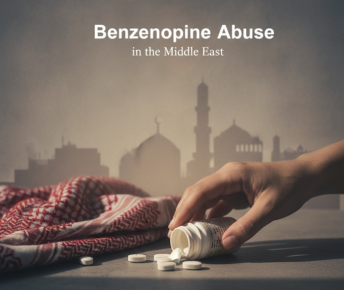
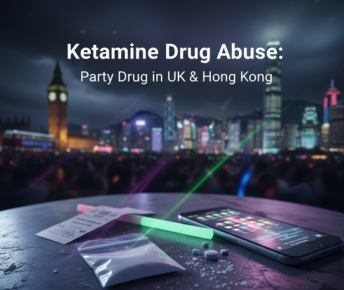










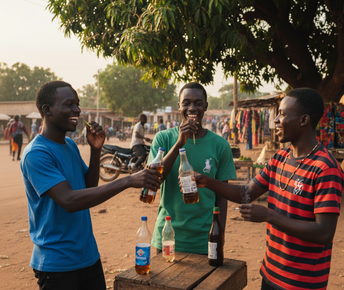
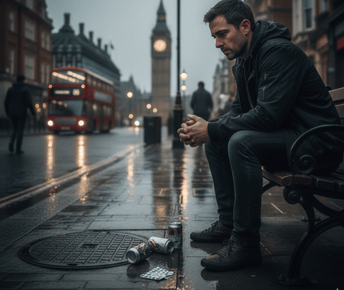



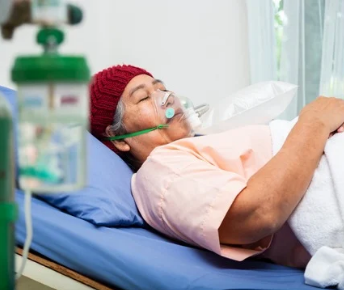


 Yes, many offer serene environments and solid therapeutic frameworks. However, quality varies, so it’s essential to research accreditation, staff credentials, and therapeutic depth.
Yes, many offer serene environments and solid therapeutic frameworks. However, quality varies, so it’s essential to research accreditation, staff credentials, and therapeutic depth.




